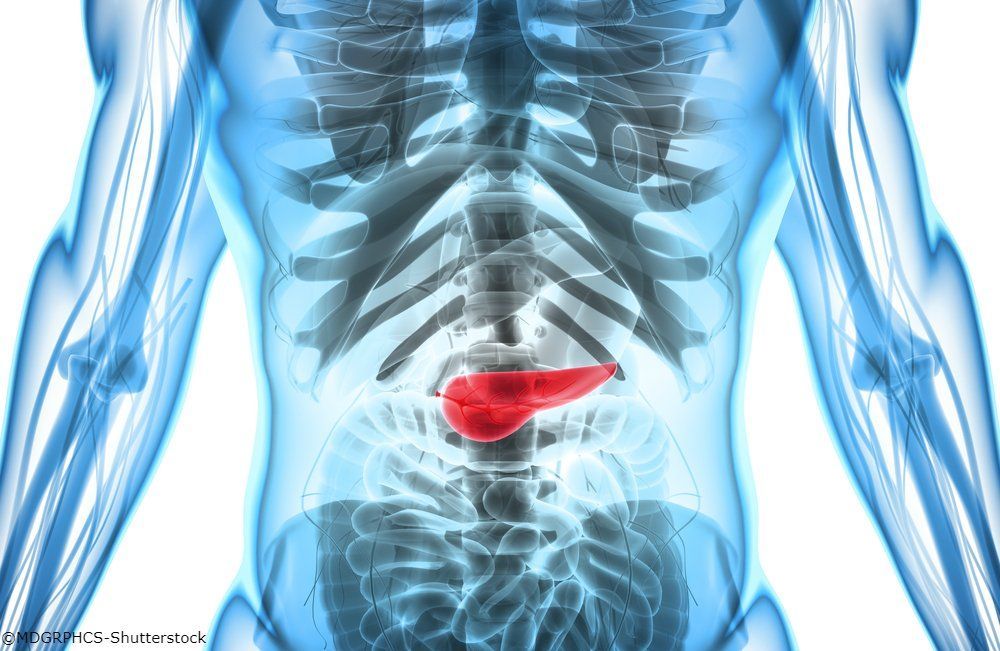Initial Staging for PDAC Yields Inaccuracies
Research shows that patients with pancreatic ductal adenocarcinoma are frequently understaged prior to surgery.
Research shows that patients with pancreatic ductal adenocarcinoma are frequently understaged prior to surgery.

Most patients initially diagnosed with stage I or II pancreatic ductal adenocarcinoma (PDAC) are upstaged following histopathology, potentially due to missed lymph nodes, according to a research letter published in JAMA Network.
Researchers observed that 78.4% of patients with stage I PDAC and 29.2% of patients with stage II disease were upstaged on histopathology. Most patients with stage I disease were upstaged to stage IIB, suggesting that missed lymph nodes may be the reason for the clinical understaging.
The study utilized the National Cancer Database to analyze all patients with stage I and II PDAC who underwent surgical resection between 2004 and 2020. Patients who were staged higher at surgery than the clinical stage were considered upstaged. Two sensitivity analyses were performed, in which patients were stratified by whether they received upfront surgical resection (USR) vs neoadjuvant therapy followed by surgical resection (NTSR).
Focusing on the 24,260 patients with complete data, the median age was 60 years and 51% were women. Regarding clinical stage I PDAC, 9.3% had stage IA disease, 15.5% had stage IB, 16.9% had stage IIA, 48.8% had stage IIB, 7.9% had stage III, and 1.6% had stage IV. The mean time from diagnosis to surgery was 25 days with USR and 153 days with NTSR (P <.001)
Of the 24,260 patients, 21,327 (88%) underwent USR and 2933 (12%) received neoadjuvant therapy followed by surgical resection. Of all patients who received USR, 16,873 (79.1%) were upstaged, and of those who received NTSR, 2155 (73.5%) were upstaged (P <.001).
“The proportions upstaged were lower in the NTSR group than the USR group, suggesting that the additional time required for neoadjuvant therapy did not contribute to disease progression and upward staging,” Gerardo Perrotta, MD, a post-doctoral research fellow at Cedars-Sinai, and colleagues wrote in the research letter.
Of the 23,850 patients with stage II disease and complete data, the mean age was 66 years, 47% were women, 2.8% of patients had stage IA disease, 3.1% had stage IB, 23.3% had stage IIA, 64.9% had stage IIB, 3.9% had stage III, and 1.9% had stage IV. The mean time from diagnosis to surgery was 23 days with USR and 163 days with NTSR (P <.001).
Of the 21,913 patients with clinical stage II PDAC with known treatment, 16,333 (75%) underwent USR and 5580 (25%) received NTSR (P <.001). Of the patients who underwent resection up front, 4916 (30.1%) were upstaged. In the NTSR group, 1600 patients (28.7%) were upstaged.
Patients on the study were also stratified by year of diagnosis, yielding similar results. Stage I patients had increased likelihood of upstaging. Of all patients with stage I disease, 69.5% from 2006 to 2010, 82.7% from 2011 to 2017, and 75.4% from 2018 to 2020 were upstaged. For patients with stage II disease, 20.4%, 30.7%, and 49.8% were upstaged, respectively.
“Few studies quantify the inaccuracy of clinical vs pathologic staging. Of 28,338 patients with PDAC diagnosis (all stages) between 2004 and 2016 who underwent surgical resection, the clinical stage was a poor predictor of pathologic staging, overrepresenting earlier stages: 75.7% of clinical stage I patients were upstaged to stage II,” Perrotta and colleagues added. “The current study used more recent data, had a larger sample with clinical stage I and II PDAC, included subtypes of PDAC, accounted for changes in staging criteria, and did not exclude patients who underwent neoadjuvant therapy to obtain results that closely reflect current practice.”
Limitations of the study included the lack of information on preoperative imaging, factors that informed treatment decisions, and resectability criteria. There were no clinical outcome data for patients who were upstaged.
Reference
Perrotta G, Mohamed G; Larson B, et al. Accuracy of clinical staging in early-stage pancreatic ductal adenocarcinoma. JAMA. Published online September 5, 2024. doi:10.1001/jama.2024.16332